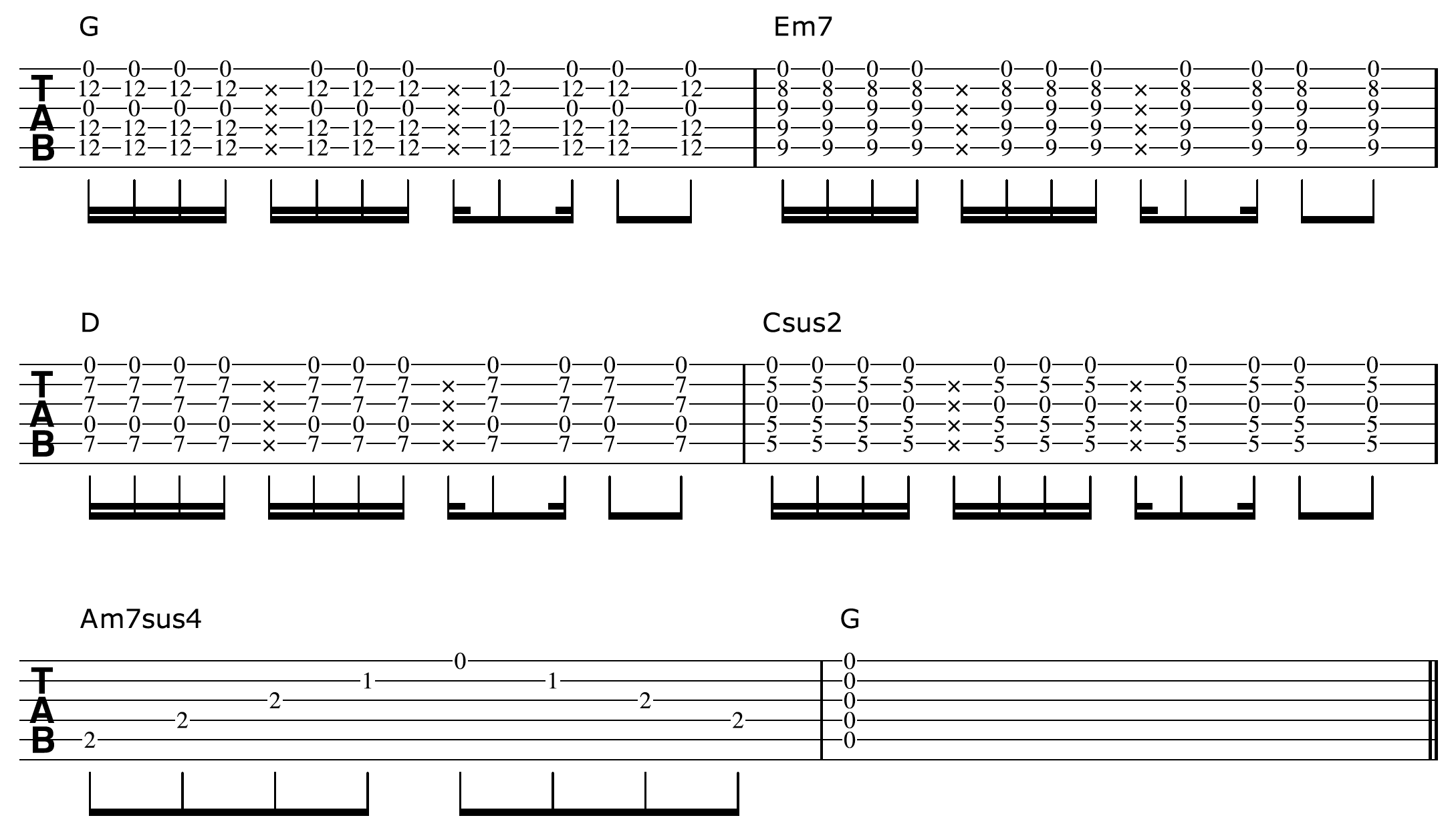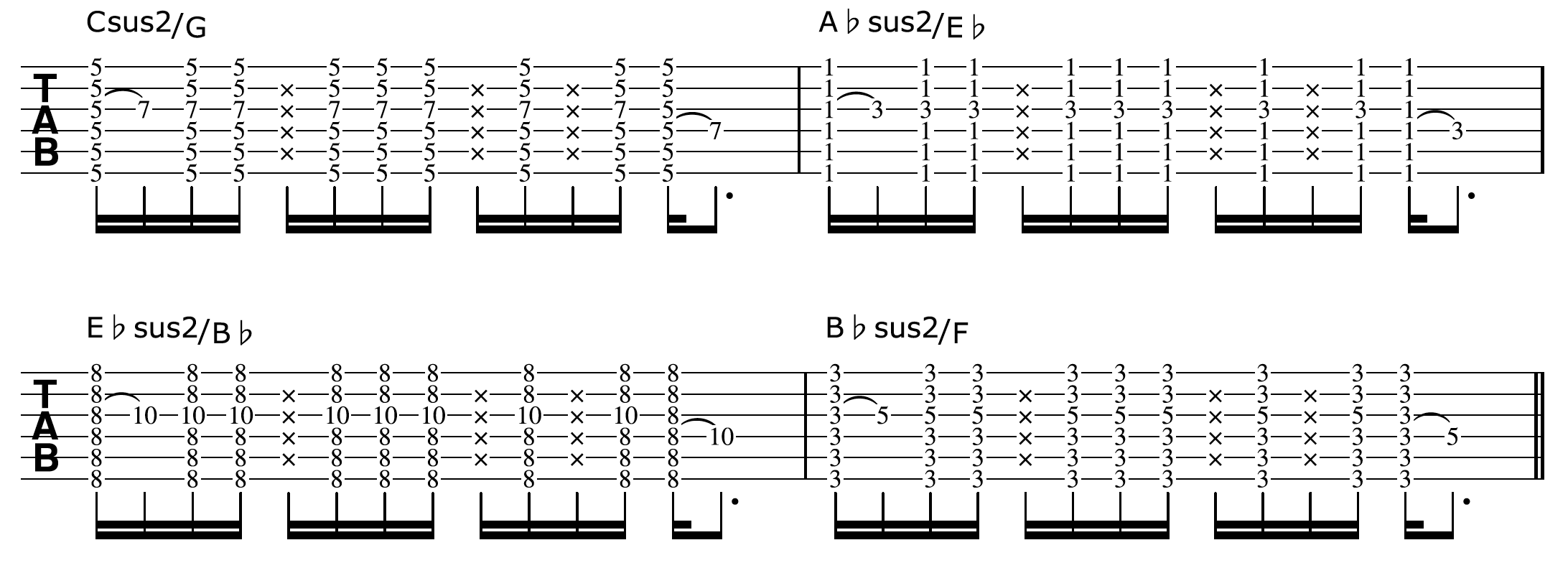A great way to change things up with your guitar playing is to create music in an open tuning.
One such open tuning that is very popular is that of G, and today we are going to take a close look at the use of chords in this tuning.
If you are thinking right about now that you are challenged enough with playing your guitar in good old standard tuning, then you are not thinking in the right way. I know, because I use to think this exact same thing myself.
Open tunings such as g will not only enhance your creativity on guitar, but also drastically increase the scope of sound with which you can play with on the instrument. What is near impossible to do in standard tuning, becomes very possible, and easy to do in an open G tuning.
I will show you this in today's article as we get stuck into some cool, unique and creative things we can do with chords in an open G tuning. Before we do this however, le's take a brief moment to see exactly what open G tuning is, and where it came from.
I use to think open G tuning originated with the early 20th century blues greats such as Robert Johnson and Muddy Waters, because it was so prevalent in their music and the style in general. However despite its popularity with the blues, open G tuning goes further back than this.
It actually originated from a piece of music known as 'Spanish Fandango' in 1830. This is why you may hear open G tuning referred to as 'spanish tuning' from time to time.
Let's look at how open G tuning compares to that of standard tuning:

* Bolded notes/strings are those that have been altered from standard tuning
Notice that by changing the 6th, 5th, and 1st strings to D, G, and D notes respectively, we will now sound a G chord when strumming the open strings together:
G Major Chord = G B D
This is the essence of an open tuning. By changing strings to different notes, you can manipulate things so that a particular chord is sounded when strumming the open strings of your guitar together.
As I said earlier, I avoided playing my guitar in open tunings for years because I thought it would be a lot harder to do than it is. I thought learning to play the thing in standard tuning was enough to keep me occupied and busy.
However once I finally got into open tunings, I really wished I had done so much earlier on, as it really was quite easy to get up and sounding great with little effort in tunings other than standard.
So don't do what I did and avoid open tunings, thinking i's like starting all over again. It really isn't. Rather, open tunings will:
See you become much more creative with your guitar playing
Provide you with a lot more sound from your instrument, including many more chord possibilities, and the drone of unfamiliar open strings
Make it easier for you to play in other open tunings. Once you get familiar with one, others will come easier to you
So le's get into some possibilities that chords provide for you in an open G tuning on your guitar.
The following are 3 ways to utilise chords and harmony in an open G tuning. There are many more approaches you could take with chords, but these will get you started and be a great introduction to open G tuning, if it is new to you.
The key is to not only learn each example, but to take the idea and apply it yourself to your own guitar playing.
So let's get to it.
A great way to tap into the unique sounds of an open tuning is to target the droning of open strings in the chords and progressions you play. Because you have altered some of the notes of the open strings compared to standard tuning, you will get some great sounds doing this.
By droning, I am referring to letting open string notes ring through.
Here is an example:

Play the above progression on a standard tuned guitar. So you would use standard open chord or bar chord shapes for the G, Em7, D, and Csus2. Now play it as above in open G tuning.
That is how cool and unique the sound of droning open strings in your chord progressions can sound!
Another great way to use chords in an open G tuning, and the droning of open strings, is to build them around the harmony of a 6th.
In fact the harmony itself is going to fall on the 2nd and 4th strings, so the shapes these create should be familiar to you because these strings have not been altered from standard tuning.
Here is the harmony of a 6th on this string set:

Next we add the drone of the 5th, 3rd, and 1st opens strings to our harmony:

Strum your way through the example above to hear the awesome sound of this approach.
If you prefer, you can arpeggiate these chords, like so:

In both examples above, be sure to move each 6th harmony shape as one. So you have two fingers down on the fretboard at all times.
Bar chords become very easy to play in an open G tuning. Instead of having to hold a shape across 3 frets, all you need to do is bar a single fret.
Think about it.
If you can sound a G chord by simply strumming the open strings together, then it should hold true that if you bar the first fret you will get a G# chord. If you move this bar up to the 2nd fret you get an A chord. The 3rd fret, an A# chord and so on.
Check out the following bar chord progression I have created in an open tuning:

Because I only need a single finger to execute each bar chord, it frees up my other fingers which can then easily add extensions and embellishments to each chord.
Trying to play the above progression as it is, in standard tuning, would be very difficult to do!
Play around with the single fret bar chord and see what you come up with by adding extensions with your other fingers like I have. Remember i's always about taking the ideas you learn and applying and creating with them yourself.
Learn more ways you can use the tuning of open G on your guitar here.
Specializing in online acoustic guitar lessons, Simon Candy is based in Melbourne, Australia where he runs his own guitar school.